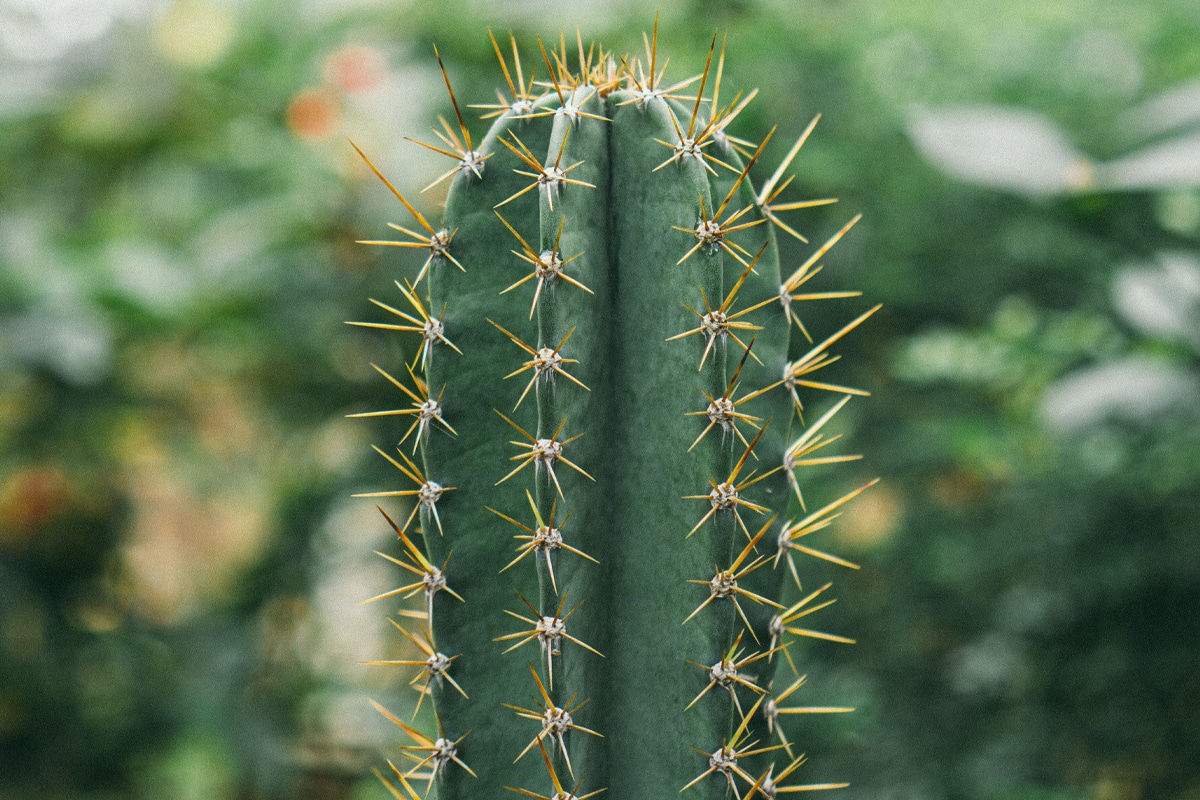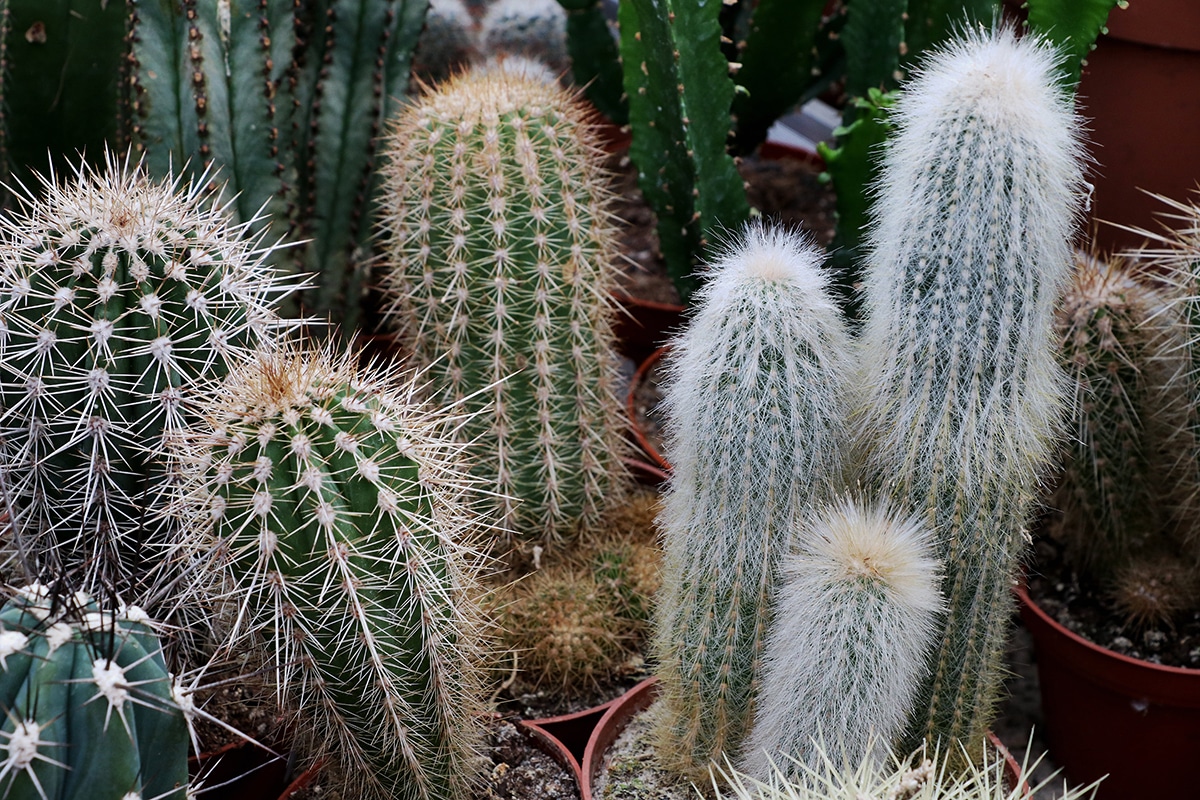
The world of succulents is very wide and diverse. These types of plants have become very popular because they are so beautiful and incredibly easy to maintain. For this reason, it is not surprising that more and more people choose to grow these precious vegetables to beautify their home. However, as there are so many different species, it does not hurt to know them beforehand to know what the specific care is. Today we are going to introduce you to a very popular cactus called Pilosocereus pachycladus.
If you want to know more about this vegetable, I recommend that you keep reading. In this article we will explain what is he Pilosocereus pachycladus, how it looks and what care it requires. I hope this information is interesting for you! And who knows, maybe you even want to buy one to decorate your home. Without a doubt, it would be an excellent option.
What is Pilosocereus pachycladus?

When we talk about Pilosocereus pachycladus, we refer to a species of cactus that is part of the family Cactaceae. It is a plant endemic to Brazil, but today we can find it all over the world. It was first described in 1979 by Friedrich Ritter, a German geologist and botanist, who published it in his book «Kakteen in South America» (German title that translates as «Cactus in South America»).
Its generic name Pilosocereus, comes from the Greek term "pilosus", which basically means "hairy", in combination with the word "Cereus«, which is a genus belonging to the cacti. Therefore, it could be said that it is a Cereus furry. The second word that makes up the name of this cactus, pachycladus, comes from Latin and means "with thick branches". As you can see, the name of this plant describes its appearance quite well: Cereus hairy with thick branches.
As we mentioned earlier, This cactus comes from Brazil, where we can find it naturally, especially in the states of Alagoas, Pernambuco, Paraíba, Rio Grande do Norte, Ceará, Minas Gerais, Piauí and Bahia. It normally grows at elevations between 50 and 1550 meters. We can find this species of succulent in quartzite outcrops that are located in the center and south of the caatinga. It is also frequent in the thickets of the rocky fields, on scree and on rocky and sandy substrata. If you have the chance to visit these regions and want to know the flora, it is highly recommended to go through protected areas, such as the Morro de Chapéu State Park or the Chapada Diamantina National Park, where there are many specimens of Pilosocereus pachycladus.
Description
Although its name already explains quite well what this cactus is like physically, we are going to discuss in more detail what it looks like. In its wild state, It usually grows in the form of a tree, reaching a height of between two and ten meters. The stems of Pilosocereus pachycladus they develop vertically and are smooth, with a gray or blue color, but always with a greenish tone. They usually have a diameter of between five and eleven centimeters. It should be noted that this cactus normally has between five and nineteen transversely grooved ribs, near the tips where the shoots are located.
As for the spines, the most distinctive feature of cacti, these are initially yellow, but become translucent and gray over time. Generally, Pilosocereus pachycladus It has between one and twelve ascending central spines that are usually between one and thirty millimeters long. Regarding the radial spines, they are normally between eight and eighteen with a length of between five and fifteen millimeters.
Near the top is the flowering of the shoots, which is very easy to distinguish and includes various ribs. The flowers of this cactus can be very variable. Its length normally ranges between four and seven centimeters, while its diameter varies between two and four and a half centimeters. It also has some very curious fruits. They are normally spherical and tear on the side. Inside is a magenta-colored pulp.
Care Pilosocereus pachycladus

Now that we know more about Pilosocereus pachycladus, let's see what care is required. You will see that it is very easy to maintain, making it an ideal species for people with little time and who are starting out in gardening.
- Irrigation: Since it is a cactus, it can be expected that it tolerates drought very well. You have to water a little when the soil is completely dry. During the growth period (spring, summer and autumn), it is best to water once or twice a week. In winter we just have to prevent the earth from drying out completely.
- Light: As a good succulent, it is a lover of the sun. For its correct development and growth it is essential that it receive a lot of direct sunlight. However, it is advisable to protect it a little from the sun for prolonged periods in the height of summer to avoid damaging the plant.
- Temperature: Since it is a vegetable that grows in semi-desert, tropical and subtropical regions, it is not surprising that it requires somewhat high temperatures, ideally ranging between 20 and 35 degrees Celsius. When the temperature exceeds 35 degrees or drops below 10 degrees, the growth of Pilosocereus pachycladus it slows down, even going so far as to initiate a latency period.
- Ground: As for the soil, it is best if it is fertile, with good drainage and rich in gravel. The pH should be between six and seven.
- Fertilizer: During the growth period, it is advisable to fertilize once a month. During planting, it is best to use nitrogen, while fertilizer rich in potassium and phosphate is the best option before and after flowering.
- Pruning: In principle it is not necessary to prune this plant, unless we want to control its size. What is important is to remove withered branches and flowers so that they do not waste nutrients and grow optimally.